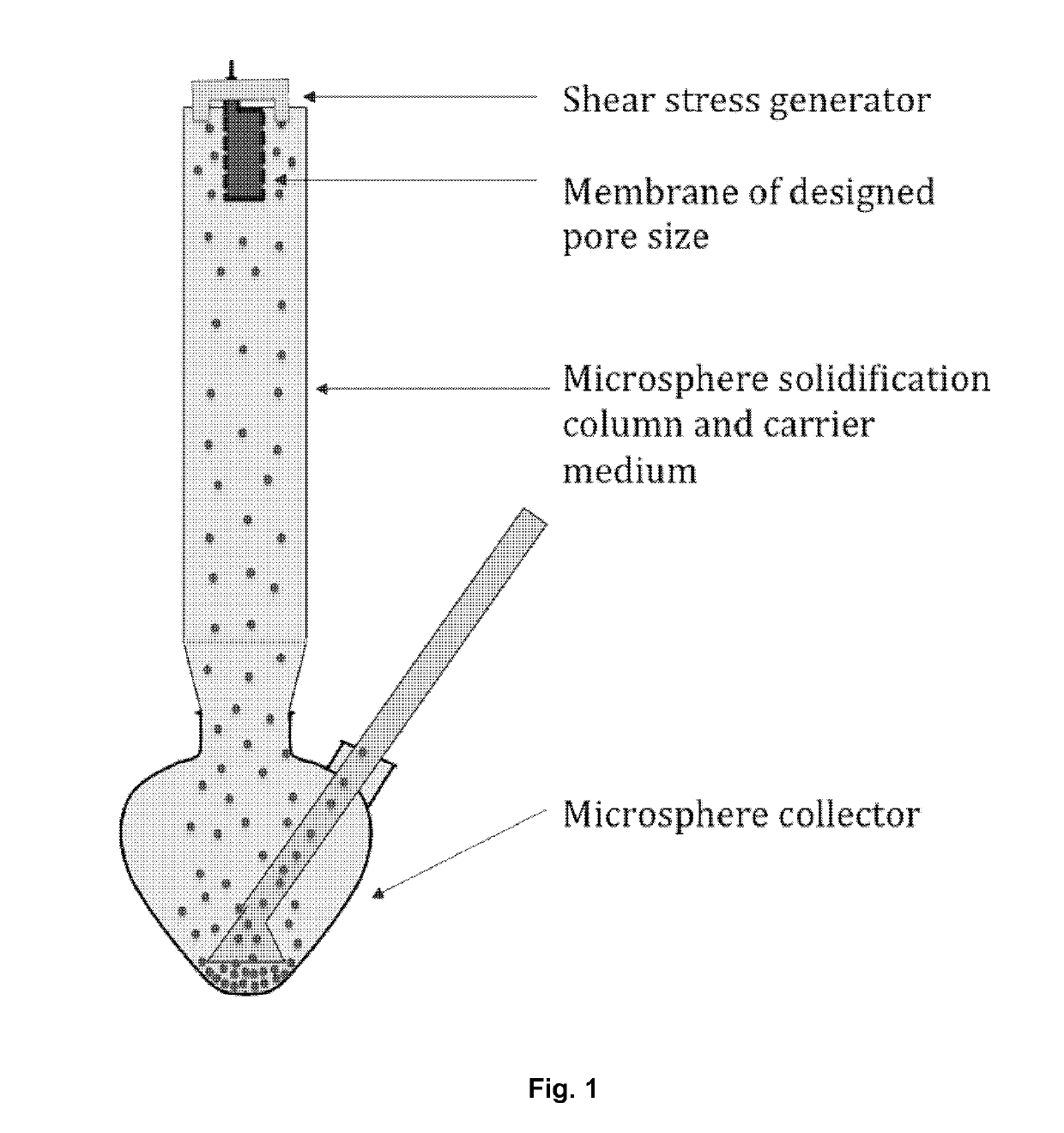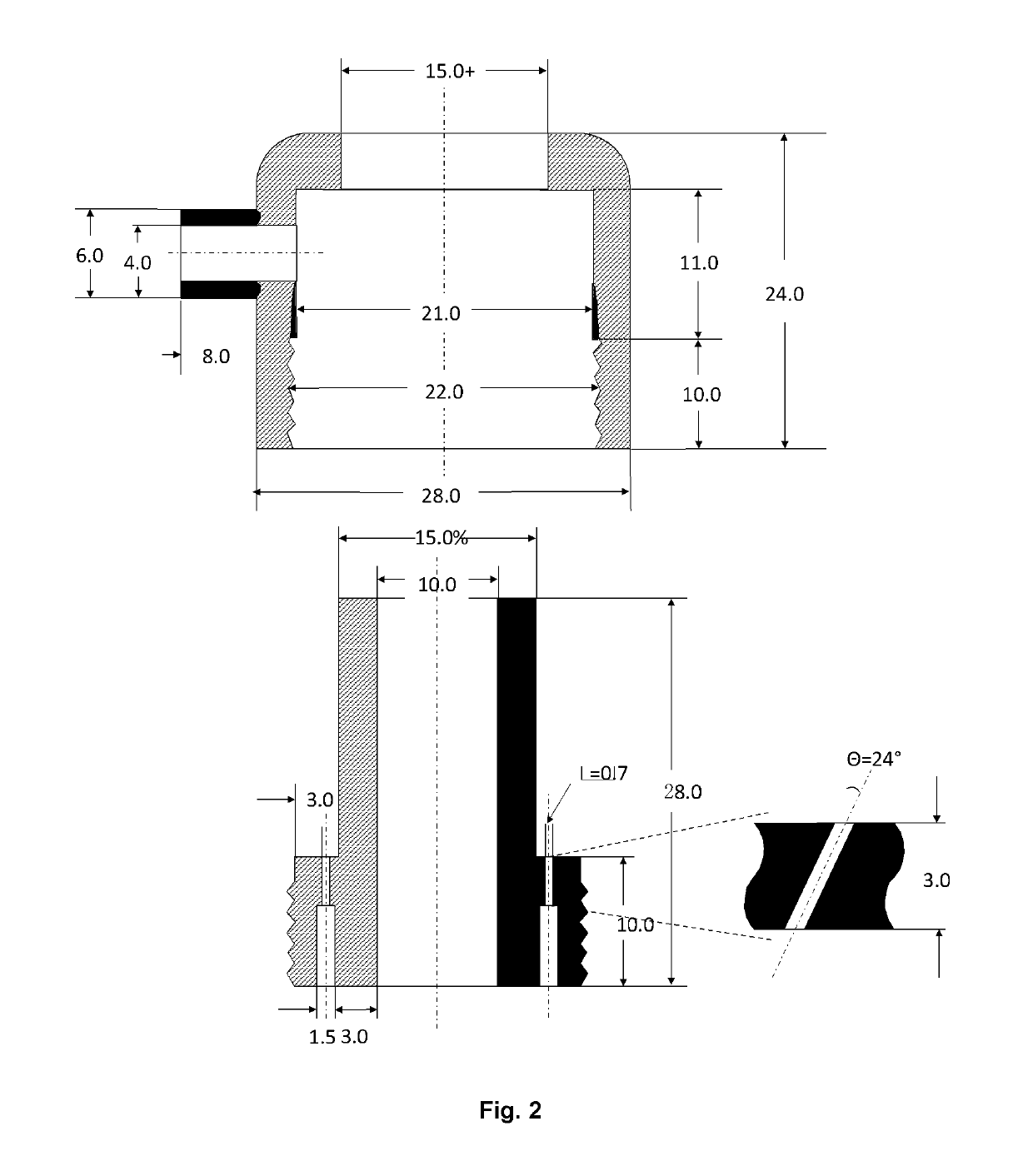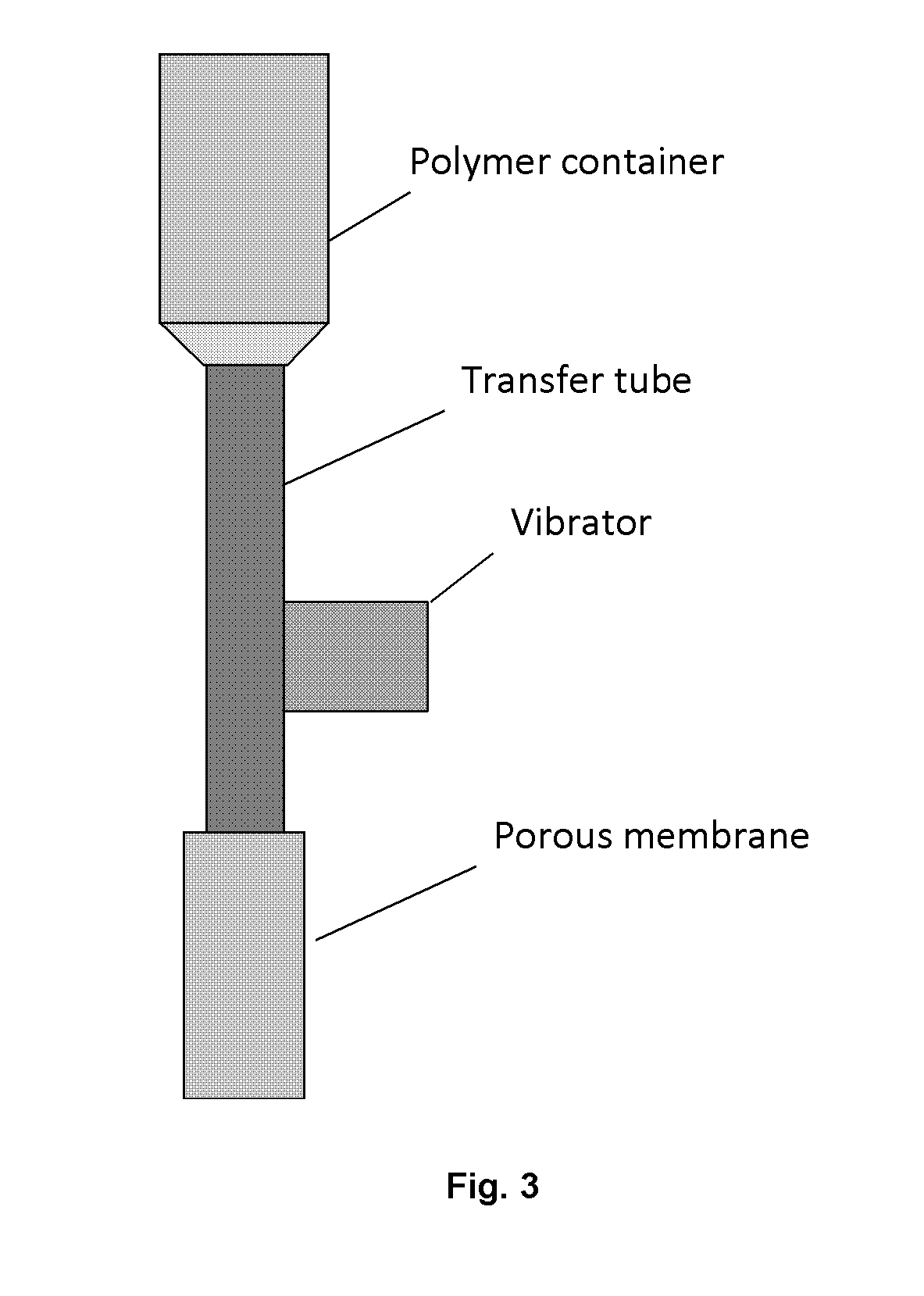Process for producing polymeric microspheres
a technology of polymeric microspheres and polymer particles, which is applied in the direction of pharmaceutical active ingredients, pharmaceutical delivery mechanisms, peptide/protein ingredients, etc., can solve the problems of reduced manufacturing yield, difficult powder-filling accuracy, and complex machine requirements
- Summary
- Abstract
- Description
- Claims
- Application Information
AI Technical Summary
Benefits of technology
Problems solved by technology
Method used
Image
Examples
example 1
re Formulation of Exenatide
[0051]Microsphere-forming polymer, PLGA / PLA, was dissolved in methylene dichloride; and exenatide was dissolved in DMSO. Then the two solutions were mixed and added in a container connected to a cylindrical porous membrane. Pressed air or nitrogen (or other gas) was applied in the container to squeeze the mixed solution through the porous membrane into a receiving phase containing polyvinyl alcohol (PVA) and NaCl. The receiving phase was contained in a column 1600˜1800 tall and connected with a microspheres collecting bottle. The embryonic microspheres squeezed through the porous membrane were settled from the top to the bottom of column and the bottle under gravity force for approximately 30˜40 second, during which the microspheres were hardened. The hardened microspheres were outputted through an inside socket tube with a bell-shape entrance under the water pressure within the tall column to another container for rinsing. The water rinsed microspheres we...
example 2
re Formulation of EPO
[0054]Pre-formulated polysaccharide fine particles in which EPO was loaded through an aqueous-aqueous emulsion or freezing-induced phase separation were mixed with the PLGA / PLA solution same as that in Example 1. The formed suspension was then loaded in the container connected to porous membrane (SPG membrane) and squeezed with pressed nitrogen through the membrane into a receiving phase same as that in Example 1. All the successive steps are the same as those in Example 1. The morphology of the microspheres were imaged using an electron microscope and an optical microscope to confirm their uniform sizes (See FIG. 5). The particle diameters were around 70˜80 μm.
[0055]To examine PEO release kinetics and the protection effect of the formulation process, the EPO microspheres were subjected to an in vitro release test and antibody test in monkeys. As shown in FIG. 6, a nearly linear release of EPO was observed from the in vitro test. FIG. 7 compares the antibody res...
PUM
| Property | Measurement | Unit |
|---|---|---|
| pore sizes | aaaaa | aaaaa |
| diameter | aaaaa | aaaaa |
| phase transition temperature | aaaaa | aaaaa |
Abstract
Description
Claims
Application Information
 Login to View More
Login to View More - R&D
- Intellectual Property
- Life Sciences
- Materials
- Tech Scout
- Unparalleled Data Quality
- Higher Quality Content
- 60% Fewer Hallucinations
Browse by: Latest US Patents, China's latest patents, Technical Efficacy Thesaurus, Application Domain, Technology Topic, Popular Technical Reports.
© 2025 PatSnap. All rights reserved.Legal|Privacy policy|Modern Slavery Act Transparency Statement|Sitemap|About US| Contact US: help@patsnap.com



